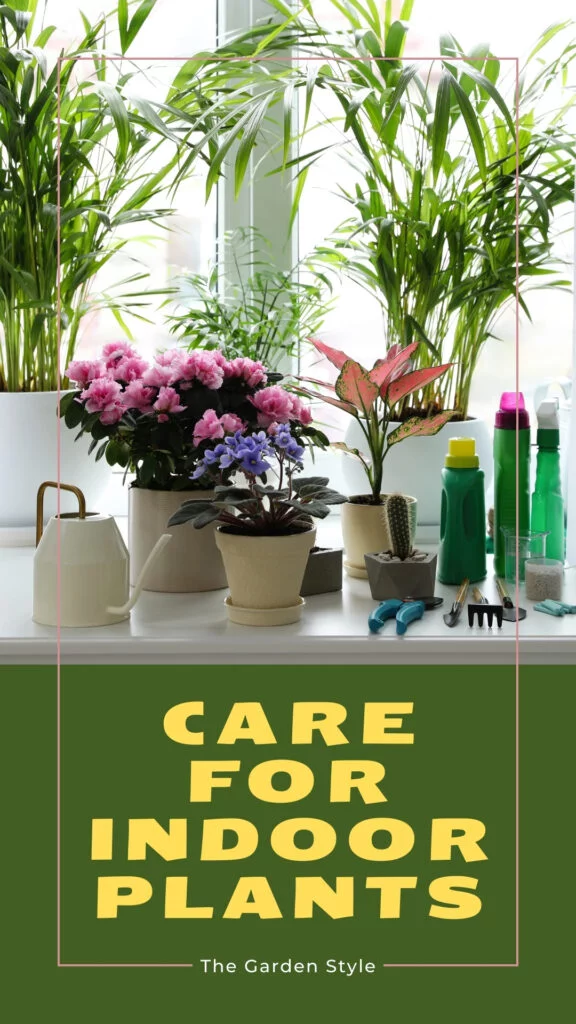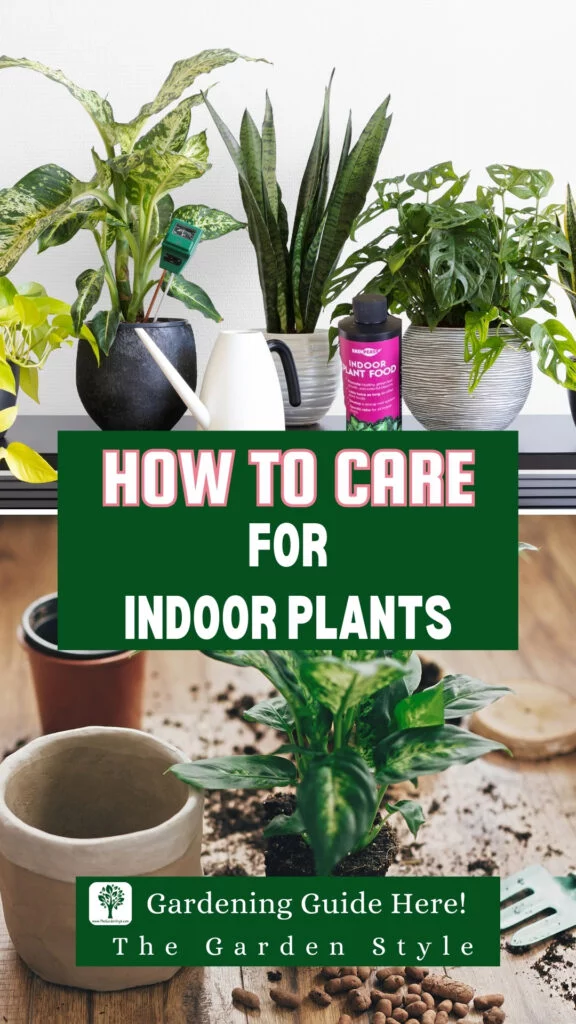Bringing nature indoors can be a rewarding and therapeutic experience. Indoor plants not only add a touch of greenery and vibrancy to your living space but also offer numerous benefits, such as improved air quality and a calming atmosphere. However, how to care for indoor plants requires some knowledge and attention to ensure their healthy growth and longevity. In this comprehensive guide, we’ll explore the essential elements of indoor plant care, from understanding their needs to maintaining their overall well-being.
Table of Contents
Understanding Your Plant’s Needs
Before diving into the specific care routines, it’s crucial to grasp the fundamental needs of your indoor plants. Every plant species has unique requirements, and meeting these needs is the key to their thriving.
Climate and Temperature Requirements for Indoor Plants
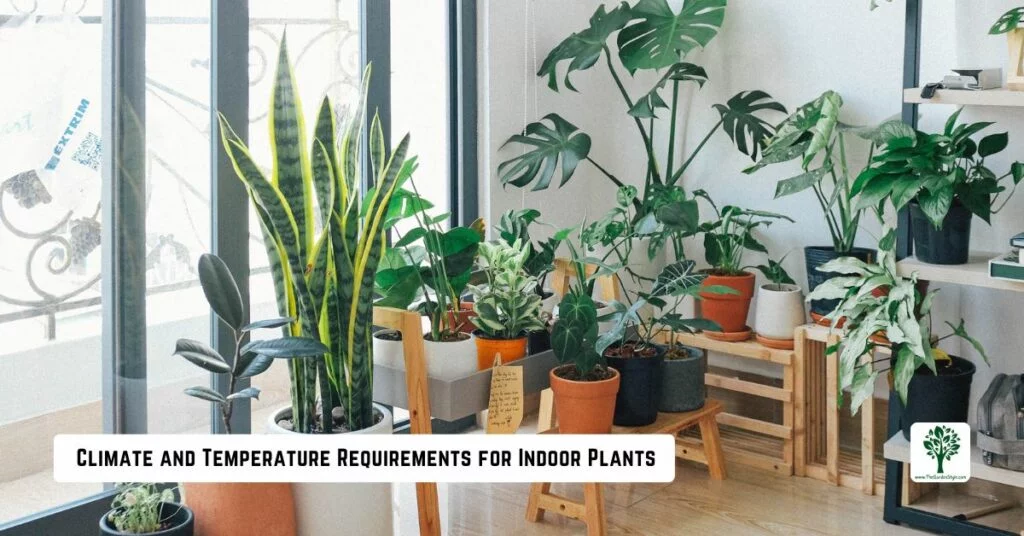
Different plants thrive in different temperature ranges, and it’s essential to research the optimal conditions for your specific varieties. Some plants prefer cooler environments, while others require warmer temperatures. Additionally, consider factors like humidity levels and air circulation, as these can significantly impact your plants’ growth and health.
| Plant Type | Optimal Temperature Range | Optimal Humidity Range | Climate Preference |
| Tropical Plants | 65°F to 80°F (18°C to 27°C) | 60% to 80% | Warm and humid |
| Succulents/Cacti | 70°F to 85°F (21°C to 29°C) | 30% to 50% | Warm and dry |
| Ferns | 60°F to 75°F (15°C to 24°C) | 50% to 70% | Cool and humid |
| Orchids | 60°F to 80°F (15°C to 27°C) | 50% to 70% | Warm and humid |
| Foliage Plants | 65°F to 75°F (18°C to 24°C) | 40% to 60% | Moderate |
Sunlight and Lighting Conditions for Indoor Plants
Sunlight is the lifeblood of plants, as it fuels their photosynthesis process. However, not all indoor plants have the same light requirements. Some varieties, such as succulents and cacti, prefer bright, direct sunlight, while others, like ferns and peace lilies, thrive in lower light conditions. Pay attention to the sun exposure in different areas of your home and position your plants accordingly.
If your home lacks adequate natural light or if you want to provide supplemental lighting for your indoor plants, grow lights can be an excellent solution. Grow lights are specially designed to emit the specific wavelengths of light that plants need for photosynthesis and healthy growth. Learn more about the best grow lights for indoor plants.
Various grow lights are available for indoor gardening, including fluorescent, LED, and HID lights. Fluorescent lights are favored for their affordability, energy efficiency, and balanced light spectrum. LEDs offer customizable spectra and intensities, while HID lights like metal halide and high-pressure sodium lamps are common in large-scale operations due to their high output.
Consider light intensity, duration, and distance when using grow lights. Most indoor plants need 12 to 16 hours of light daily, with different intensities based on the species. Improper placement can lead to insufficient light exposure or burning.
Additionally, it’s crucial to research the specific lighting needs of your plant varieties and adjust the grow light setup accordingly. Some plants may require higher or lower light intensities or prefer specific light spectra for optimal growth and development.
Soil and Potting Mix for Indoor Plants
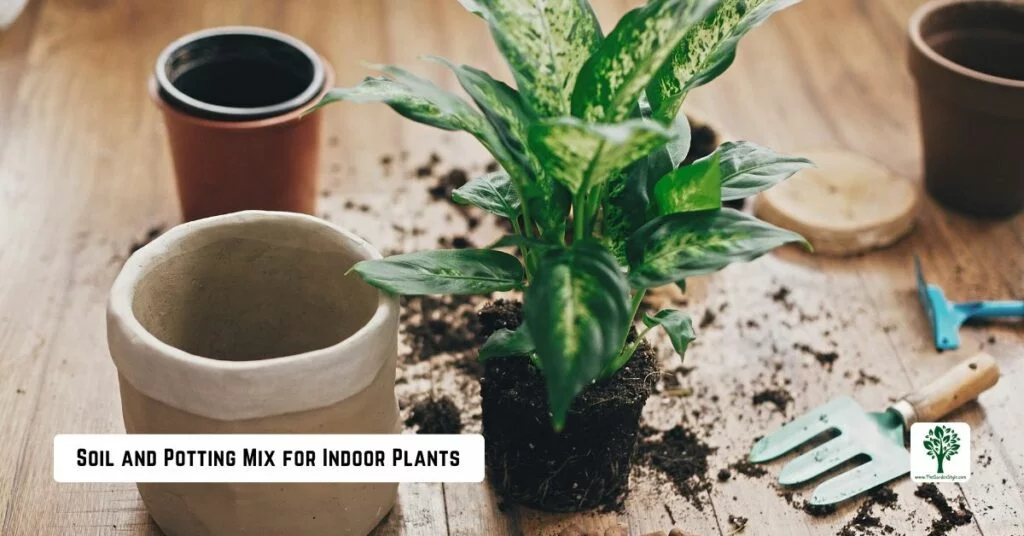
The quality of the soil or potting mix plays a crucial role in the overall health of your indoor plants. Different plants have varying soil preferences, with some thriving in well-draining soil while others prefer a more moisture-retentive mix. Additionally, consider incorporating organic matter, such as compost or peat moss, to enhance the soil’s nutrient content and water-holding capacity.
Cactus and succulent mixes are ideal choices for well-draining soil. These mixes typically contain a combination of materials like perlite, coarse sand, and bark chips, which promote excellent drainage and aeration. Examples of plants that thrive in these well-draining mixes include cacti, succulents, jade plants, and snake plants.
On the other hand, moisture-retentive mixes are better suited for plants that prefer consistently moist soil conditions. These mixes often contain ingredients like peat moss, vermiculite, and coconut coir, which help retain water while still allowing for proper drainage. Plants like African violets, philodendrons, and peace lilies are well-suited for these moisture-retentive potting mixes.
Incorporating organic matter, such as compost or aged manure, can significantly improve the overall quality of your potting mix. These materials provide essential nutrients and improve soil structure, allowing for better water retention and aeration. Peat moss is another common organic amendment that helps retain moisture and provides an acidic environment favored by certain plants, like orchids and azaleas.
Selecting the Right Container for Indoor Plants
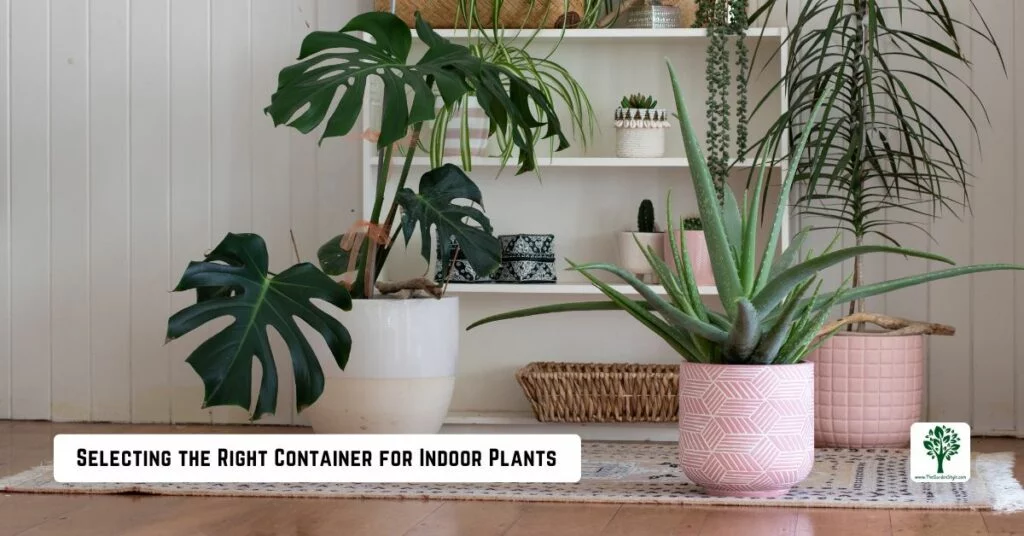
Choosing the appropriate container for your indoor plants is just as important as understanding their needs. The right container can promote healthy root growth, proper drainage, and overall plant vigor.
Drainage Holes and Saucers
Proper drainage is essential for preventing root rot and other moisture-related issues. When selecting containers for your indoor plants, ensure they have adequate drainage holes at the bottom. Additionally, consider using saucers or trays to catch excess water and prevent messy spills.
Container Material and Size
The material and size of the container can also impact your plant’s growth. Terracotta and ceramic pots are popular choices for their porosity and air circulation, while plastic containers can retain moisture for longer periods. As for size, choose a container that provides enough room for root growth while avoiding excessive soil or potting mix, which can lead to waterlogging.
Watering Your Indoor Plants
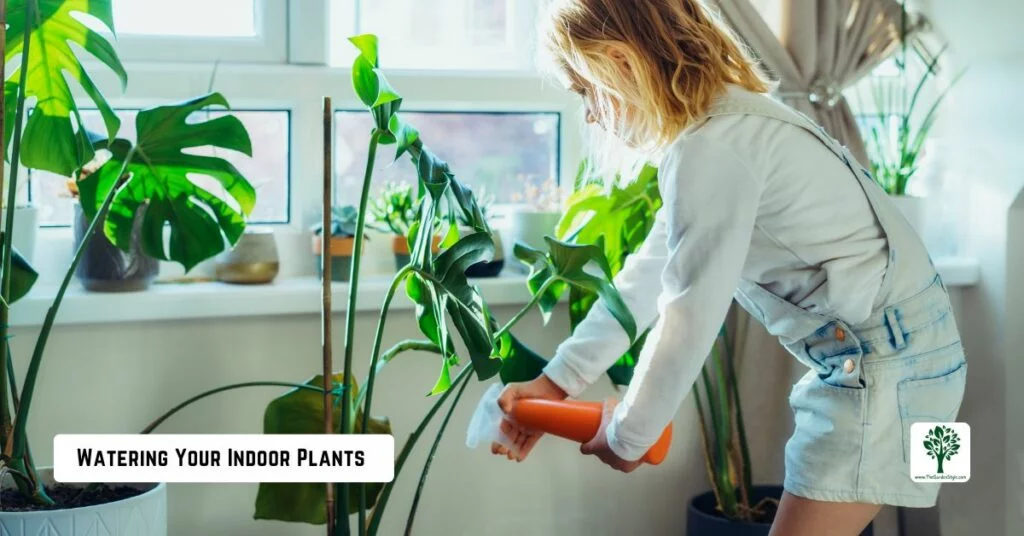
Watering is one of the most critical aspects of indoor plant care, as it directly affects the plant’s ability to absorb nutrients and maintain overall health. However, overwatering or underwatering can lead to various issues, such as root rot, wilting, or nutrient deficiencies. Successful care for indoor plants includes monitoring soil moisture levels and adjusting watering frequency accordingly.
Frequency and Timing
The frequency and timing of watering can vary depending on factors like plant species, pot size, soil type, and environmental conditions. For instance, while succulents thrive in well-draining soil and prefer infrequent watering, ferns may require more frequent watering due to their preference for moist conditions. As a general rule, water your plants when the top inch or two of soil feels dry to the touch. However, it’s essential to research the specific watering needs of your plant varieties and adjust accordingly to ensure their optimal growth and health.
Signs of Over or Underwatering
Recognizing the signs of over or underwatering is crucial for maintaining healthy indoor plants. Overwatered plants may exhibit drooping leaves, yellowing foliage, and a mushy or rotten stem base. On the other hand, underwatered plants often have wilted, crispy, or curled leaves and dry, compacted soil.
Checking Soil Moisture
Effective care for indoor plants requires attention to factors such as humidity levels, soil quality, and temperature.
Before watering your plants, it’s always a good idea to check the soil moisture level. You can do this by inserting your finger into the soil or using a moisture meter. This simple step can help prevent overwatering or underwatering and ensure your plants receive the appropriate amount of hydration.
Maintaining Healthy Indoor Plants
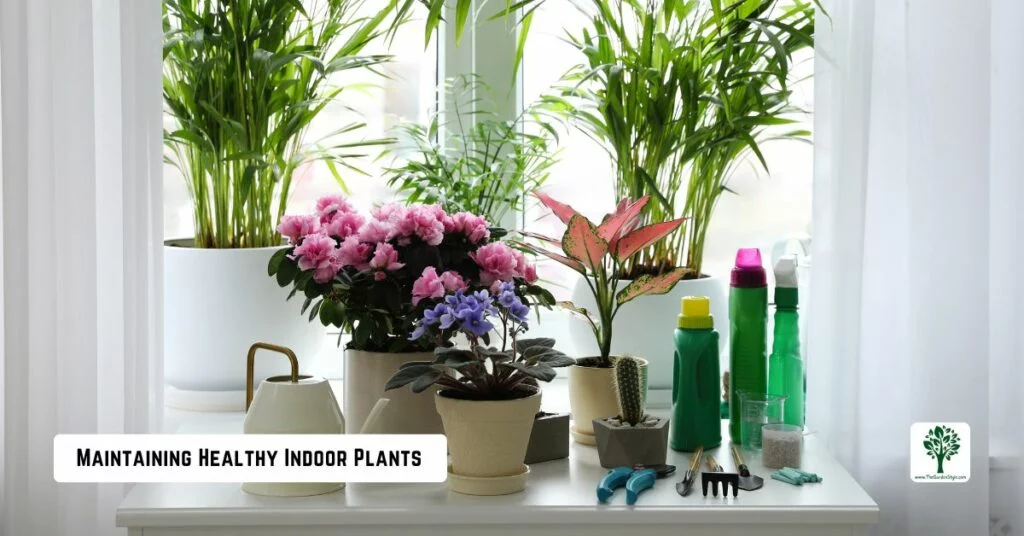
In addition to proper watering, several other maintenance tasks are essential for keeping your indoor plants in top condition. Some tips for caring for indoor plants include pruning, fertilizing, and pest and disease control, all vital aspects of having thriving houseplants.
Pruning and Grooming
Regular pruning and grooming can encourage new growth, improve air circulation, and maintain your plants’ overall appearance. Remove any dead, damaged, or unsightly leaves or stems, and gently trim back overgrown or leggy areas. Be sure to use clean, sharp pruning shears or scissors to avoid damaging the plant.
Fertilizing and Nutrient Needs
Like any living organism, indoor plants require a steady supply of nutrients to thrive. While quality potting soil can provide some initial nourishment, over time, these nutrients become depleted. Consider using a balanced, water-soluble fertilizer or slow-release fertilizer specifically formulated for indoor plants to replenish essential nutrients.
I usually use an NPK fertilizer with a ratio of 4-3-4 or 2-3-2 for my indoor plants. I always apply it following the manufacturer’s instructions to avoid over-fertilizing. Fertilize indoor plants during their active growing season for optimal growth and health.
- Indoor plant food specifically formulated for indoor potted plants. High concentrate plant fertilizer only take 1/2 teaspoon while watering your houseplants.
Pest and Disease Control
Despite your best efforts, indoor plants can sometimes fall victim to pests or diseases. Common issues include spider mites, mealybugs, fungal infections, and bacterial leaf spots. Regularly inspect your plants for any signs of infestation or disease, and take prompt action using appropriate treatments or organic methods, such as neem oil or insecticidal soap.
Recommended reading: How to Mix Neem Oil for Plants.
Common Indoor Plant Varieties and Their Care
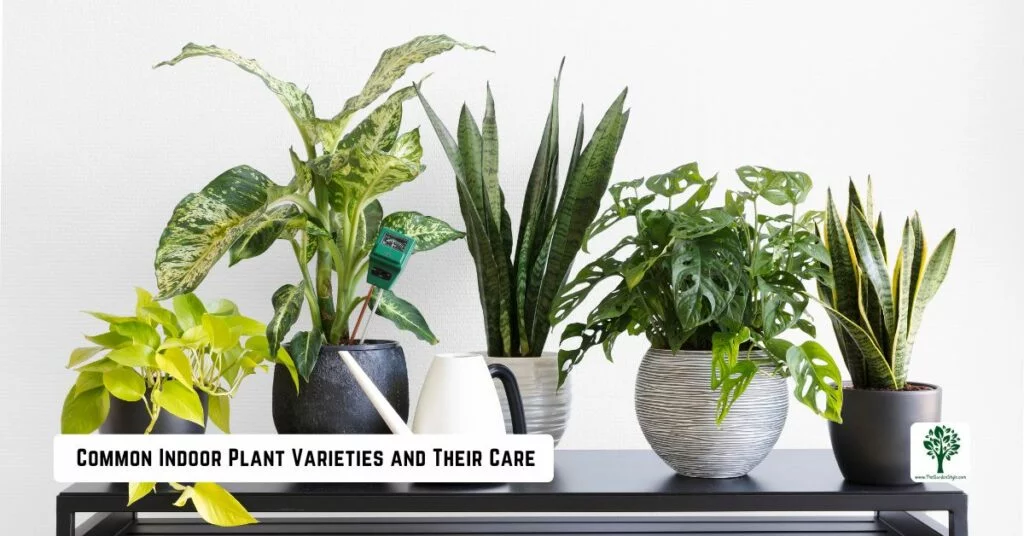
With countless indoor plant varieties available, it can be overwhelming to choose the right ones for your space and lifestyle. Here are some popular options and their care requirements:
Low-Light Tolerant Plants
If your home has limited natural light, consider low-light tolerant plants like snake plants, pothos, ZZ plants, or Chinese evergreens. These varieties can thrive in indirect or filtered light conditions and are perfect for dimly lit rooms or offices.
Discover how to brighten up your space naturally with our article on “14 Best Low-light Indoor Plants for Vibrant Interiors.”
Air-Purifying Plants
Certain indoor plants, such as peace lilies, English ivy, and Boston ferns, are known for their air-purifying properties. They can help remove harmful toxins and pollutants from the air, creating a fresher and healthier indoor environment.
A 1989 study by NASA and the Associated Landscape Contractors of America (ALCA) demonstrated that certain houseplants naturally filter toxic agents from indoor air.
Pet-Friendly Indoor Plants
If you have furry friends at home, it’s essential to choose pet-friendly plants that are non-toxic and safe in case they’re accidentally ingested. Some excellent options include spider plants, African violets, and money trees.
Explore the beauty of nature indoors with our comprehensive guide, “Best Indoor Plants: Discover Low-Light Wonders for Stylish Homes” and transform your living space into a green oasis effortlessly.
Final Thoughts
Proper care for indoor plants involves understanding their specific needs for light, water, and nutrients. With the right care, indoor plants can thrive and bring a touch of nature to any indoor space.
By understanding your plants’ needs, selecting suitable containers, watering correctly, and providing regular maintenance, you can create a thriving indoor garden that not only enhances the aesthetics of your home but also contributes to your overall well-being.
Frequently Asked Questions
Some indoor plants known for their oxygen-producing qualities include Snake Plant, Aloe Vera, Areca Palm, Peace Lily, and Spider Plant.
Yellowing leaves can indicate a variety of issues, such as overwatering, underwatering, nutrient deficiencies, or pest infestations. Check the soil moisture level, adjust your watering schedule, and consider applying a balanced fertilizer. If the problem persists, inspect the plant for any signs of pests or diseases.
The sunlight requirements vary greatly among different indoor plant varieties. Some plants, like succulents and cacti, prefer bright, direct sunlight, while others, such as ferns and peace lilies, thrive in lower light conditions. Research the specific light needs of your plants and position them accordingly.
While regular potting soil can be used for indoor plants, it’s generally recommended to use a well-draining potting mix specifically formulated for indoor plants. These mixes typically contain ingredients like peat moss, perlite, or vermiculite, which help improve aeration and drainage.
If this post about how to care for indoor plants was helpful, please share it:
